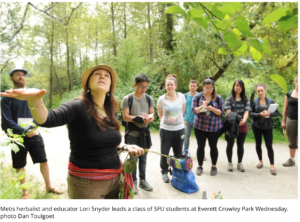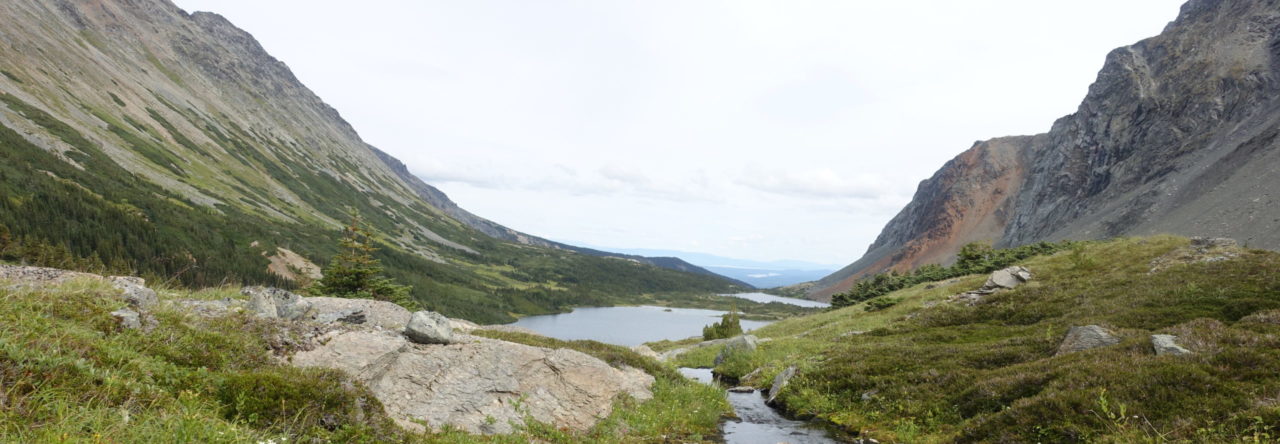During the Classrooms to Community professional development conference, I was privileged to listen to Lori Snyder’s workshop on “Acknowledging and Repairing our Relations with our Wild, Native and Medicinal plants.” Her lesson was that everything we are – physically, emotionally, spiritually, and intellectually is connected to the natural world. One of the big lessons I took from this workshop was that, “Plants are our oldest teachers” (Robin Wall Kimmerer).

This idea, that every plant can teach us something (even the ones we consider weeds), can instantly shift our perspective of our place in this ecosystem. By incorporating these ideas into (and outside!) of our classroom, we may help to deepen our learner’s connection to the land they are living on and therefore deepen the authenticity and wholeness of their learning.
A strategy Lori suggests to repair our learners’ connection to our native, wild, and medicinal plants is to create a “living library” on the school grounds. This means planting native and medicinal plants and herbs on an accessible portion of school grounds. The proximity of this library to the school makes it accessible for every student to engage with the plants in an unstructured (during recess) or structured (during class) way.
An idea I had for using the living library in literacy class is to ask students to choose a plant, weed, or tree in the library and to get to know it. Like a book or a great teacher, plants can teach us so much; we just have to be open and receptive to their knowledge. In this lesson I would ask students to sit with their chosen plant for a while and just observe. As Lori suggested, this will help students down regulate and engage their parasympathetic nervous system (Snyder, 2020). After observation, students may get to know it’s personality a bit better. Students may do more research about the plant, on their own or by asking an elder, a parent, a teacher, or book about their experiences of a plant. Learners may then use this knowledge to write a plant character profile. I believe this lesson will help students to appreciate and respect the food, medicine, life, and teachings of our plants. I also think this activity will deepen their connection to the land, an essential step in decolonizing education.
I am continually reflecting and learning on how I can further embed Indigenous worldview at the heart of my teaching practice. To develop my learning in this area, I will continue to seek mentorship from great teachers like Lori Snyder, as well as to continue to develop my own connection to the land.
Lori stated that “curiosity is at the heart of everything” (Snyder, 2020). If we inspire our students and ourselves to stay curious about the land we live on, we may engage them in connected, authentic, and meaningful lifelong learning.
References
Kimmerer, R. W. (2013). Braiding sweetgrass: Indigenous wisdom, scientific knowledge and the teachings of plants. Minneapolis, MN: Milkweed Editions.
Snyder, L. (2020, Oct 19). Acknowledging and Repairing our Relations with our Wild, Native and Medicinal plants. Classrooms to Communities, Prince George, BC, Canada.

Leave a Reply